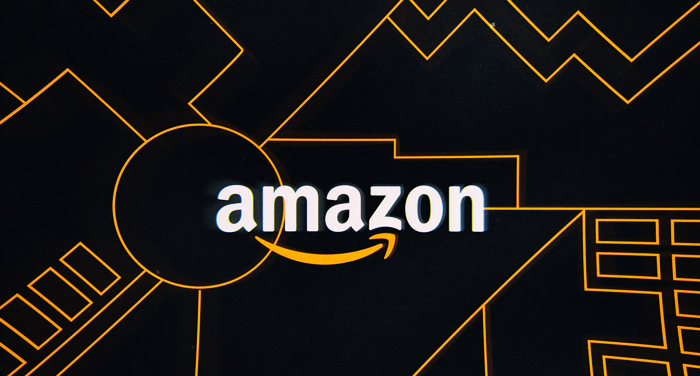L'Autorità Garante della Concorrenza e del Mercato, in data 26 luglio, ha autorizzato con condizioni…
How low prices could make for an antitrust case against Amazon

(Via The Verge)
In the late 2000s, diapers.com and its parent company Quidsi had built a limited but successful e-commerce business — until Jeff Bezos called them in for a meeting. As reported in Brad Stone’s 2013 book, The Everything Store, Bezos tried to by the company — and when they refused, began rapidly dropping Amazon’s diaper prices, including under a newly launched Amazon Mom product.
The new venture was a disaster for diapers.com. As Quidsi saw it, the only way to sustain those low prices was by selling diapers at a loss, which Quidsi estimated to be as high as $100 million every three months. Quidsi’s customer base plummeted and, after a bidding war with Walmart, the company finally sold out to Amazon. As Stone suggests, the sale was made “largely out of fear” that Amazon would drop prices further.
It’s the kind of hardball competition Amazon is known for, but a new legal theory could make those tactics a lot riskier. A widely hailedpolicy paper published earlier this year in the Journal of Antitrust Enforcement lays out an argument that, under the right circumstances, could let companies like Quidsi sue Amazon for cutthroat price competition. If the suit were successful, the court could issue an injunction requiring Amazon to change how it prices products. It’s a new argument that hasn’t found favor in the courts so far. But if that changes, it could open the door to dozens of lawsuits from potentially aggrieved competitors and endless legal battles over whether Amazon’s prices are fair.
The paper, written by Fordham University law student Shaoul Sussman, revolves around the idea of “predatory pricing,” a long-standing concept in economic thought. To get the better of a competitor, a business drops the price of a product to below its cost to produce. The competitor, unable to beat the price, goes out of business. Then the company, now with a monopoly, raises prices, recouping the loss.
A classic example is two airlines competing over a single route between two cities. One, seeing an opportunity to undercut the competition, drops the price of a ticket by half, taking a loss. When the other airline fails to keep up, it goes out of business. Without a competitor, the first airline is then free to jack up prices. Soon enough, it’s made back the cash it lost by eliminating a competitor.
In theory, antitrust law makes those schemes illegal, but Sussman argues that current law is ill-equipped to deal with newer companies. Shareholders of major companies are more willing to invest in businesses that lose money or have in the past, with the expectation that they are growing and will make tremendous profits in the future, once they’ve expanded to a massive size. In some ways, the structure of venture capital investment encourages this model, investing tens of millions of dollars in unprofitable companies with the expectation of massive returns if companies scale.
The new breed of predatory pricers don’t necessarily need to raise prices to recoup their costs, according to Sussman’s paper. They simply have to bet that, sometime in the future, their costs will drop — either because the technology for producing a product gets cheaper or because the scale of the business introduces new efficiencies. For consumers, little would seem to change, but the company would have cemented a dominant position in the market.
Sussman argues that Amazon, which has generated slim or negative profits for most of its history, would be a prime target for this type of lawsuit. With profitable business units like Amazon Web Services throwing off cash, Amazon can afford to price other products below market rates as a way to grow business. It also launches private-label products under AmazonBasics, including everything from electronics equipment to clothing. All the offerings are designed to be a little bit cheaper than the other options, often with disastrous results for the competition. In other areas, Amazon has shown itself to be more than willing to drop prices to draw in customers: in one high-profile example, the company cut prices at Whole Foods immediately after acquiring the grocery chain.
Predatory pricing law is already generating some discussion in Washington. In a paper from 2017 that raised some related issues, the antitrust scholar Lina Khan wrote that “the fact that Amazon has been willing to forego profits for growth undercuts a central premise of contemporary predatory pricing doctrine, which assumes that predation is irrational precisely because firms prioritize profits over growth.”
“In this way,” Khan wrote, “Amazon’s strategy has enabled it to use predatory pricing tactics without triggering the scrutiny of predatory pricing laws.”
So far, government regulators haven’t shown much appetite for investigating Amazon in an antitrust case. But Sussman’s reading of the law would open the company up to civil suits from competitors, like Quidsi once was. “If diapers.com offers Huggies for $10 and now Amazon is selling them for $5 and losing $2 on each shipment of diapers,” Sussman says, “then diapers.com can bring an antitrust cause of action against Amazon.” A vendor selling on Amazon’s platform itself might also be able to make a case, he suggests, if they can prove Amazon used its sway to force prices lower.
Michael D. Smith, a professor of information technology and marketing at Carnegie Mellon University, is skeptical of the idea holding up in a court proceeding. The fast-changing nature of online business, he says, makes it more difficult to recoup losses through pricing. “The point here is that economists have always recognized that setting prices below costs in the hopes of realizing monopoly profits in the future is an incredibly risky strategy,” Smith told The Verge in an email. “The data say that predatory pricing is even riskier in a digital world because digital processes make it harder for firms to maintain their market dominance in the long run.” Without some sinister strategy for recouping their money through monopoly power, plaintiffs would simply be punishing Amazon for offering low prices.
Reached for comment, an Amazon spokesperson denied that there was any predatory motive behind the company’s push for low prices. “Amazon represents less than 4 percent of the highly competitive US retail market, and our competitors include all other online and brick-and-mortar stores,” a spokesperson said in a statement. “We’re far from the first retailer to compete on price, and like other retailers, we work hard every day to provide customers vast selection, fast delivery, and low prices.” The company also pointed out that the majority of retail sales still occur in brick-and-mortar stores.
As Sussman writes in the paper, it is “entirely unknown” whether Amazon has ever engaged in predatory pricing. Under current disclosure laws, there’s no simple mechanism to examine a company’s pricing decisions. A lawsuit or government action might be able to reveal some of the relevant information, but in the meantime, there’s no proof that Amazon has ever priced items below cost.
The only way to get that proof would be a federal action from an agency like the Federal Trade Commission, which could compel Amazon to disclose the prices it pays for goods. Sussman suggests that changes in vendor policies could mean the company has been shifting into recoupment mode, making some kind of regulatory action more urgent than ever. “Without vital data concerning actual costs,” Sussman writes, “there is no real way to evaluate Amazon’s costs.”
Fonte: The Verge








